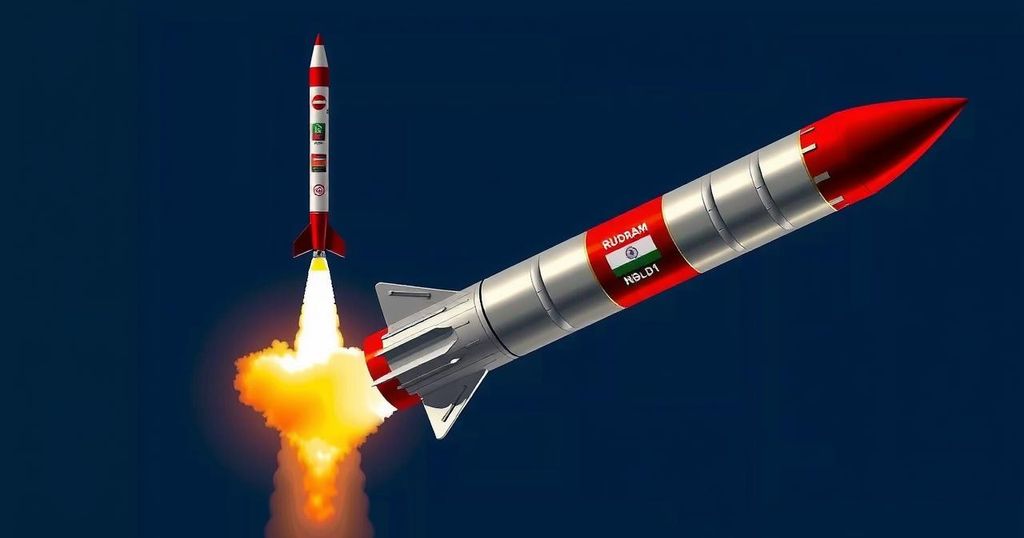India Advances Defence Capabilities with RudraM-II and Guided Pinaka Missile Tests
The DRDO successfully tested the RudraM-II air-to-surface missile from a Su-30MKI aircraft, designed to neutralize enemy military assets. The test validated key performance factors and aims for production clearance by 2026. Additionally, the first flight test of the Guided Pinaka Weapon System was completed, showcasing India’s advancements in both missile and artillery capabilities.
The Defence Research and Development Organisation (DRDO) of India has marked a significant milestone in its defense capabilities with the successful flight test of the RudraM-II air-to-surface missile. Launched from a Su-30MKI platform, the RudraM-II is designed to target and neutralize various enemy assets, including military installations and communication systems, thereby enhancing India’s air combat effectiveness. With production clearance set for 2026, this missile represents a critical advancement in India’s defense arsenal.
The test took place off the coast of Odisha on May 29, 2024, at 1130 hours and met all trial objectives, validating the missile’s propulsion system and control algorithms. Data collected from various tracking instruments confirmed the missile’s performance during this flight. In addition, the DRDO announced the completion of the first flight test of the Guided Pinaka Weapon System as part of the Provisional Staff Qualitative Requirements (PSQR) validation trials, indicating further enhancements in India’s artillery capabilities. This system is developed collaboratively by several Defense Research institutes and showcases India’s commitment to indigenous defense development.
The development of advanced missile systems such as the RudraM-II and the Guided Pinaka reflects India’s strategic focus on bolstering its defense capabilities amid a complex security environment. The RudraM-II aims to enhance air-to-surface strike capabilities against a range of strategic targets, while the Guided Pinaka system serves as a precision artillery solution. The establishment of production timelines and successful testing phases signify India’s intent to advance and modernize its military capabilities significantly.
In conclusion, the successful flight tests of the RudraM-II missile and the Guided Pinaka system underscore India’s growing emphasis on indigenous defense technology development. As these systems transition to production, they are expected to significantly enhance India’s military operational capabilities, countering potential threats from regional adversaries. India’s ongoing investment in missile technology is an essential aspect of its broader national security strategy.
Original Source: www.india.com








Post Comment